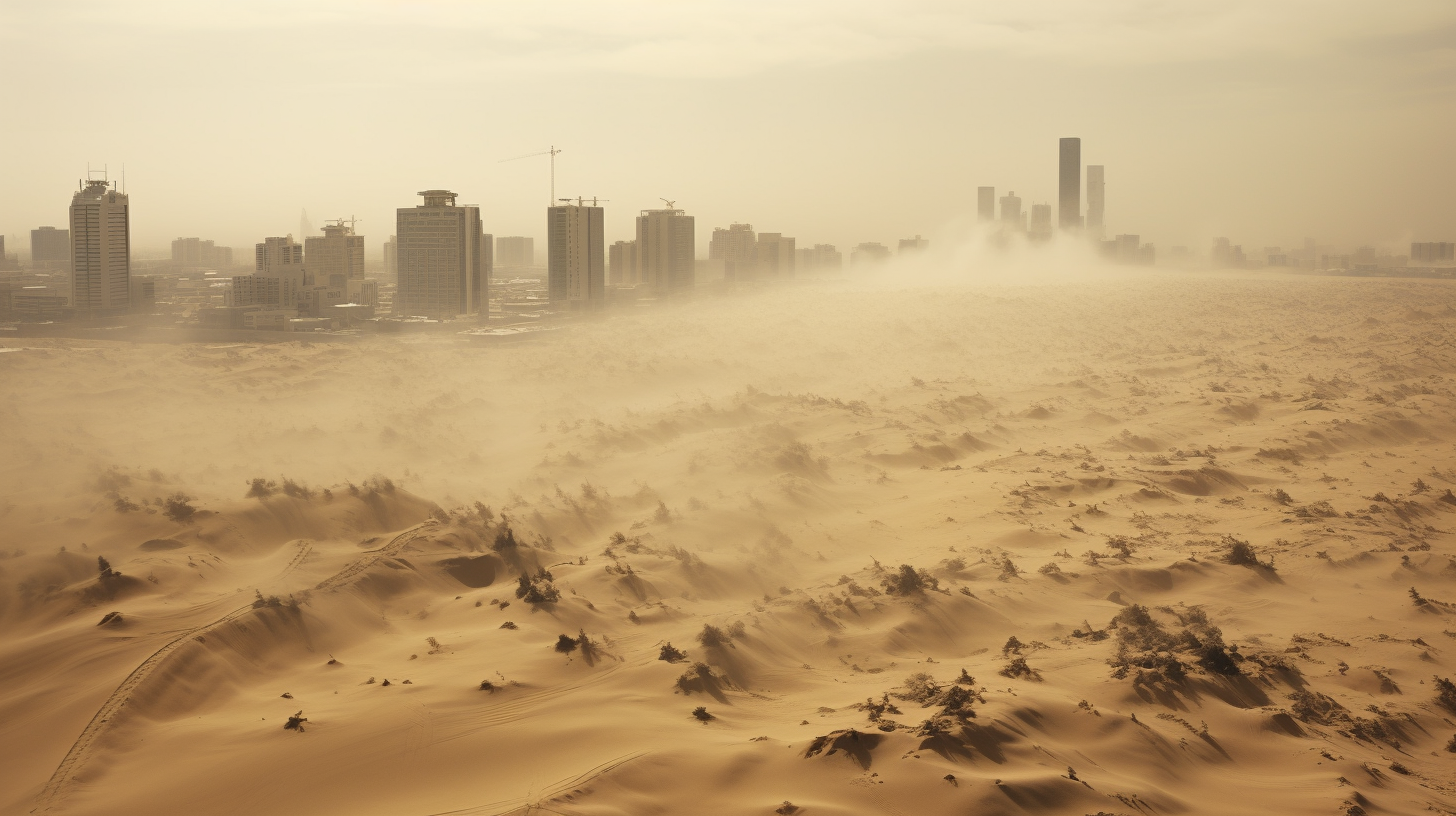The once-vibrant skylines, markers of human ingenuity and urban triumph, have begun to fade. A gritty haze blurs the outlines of buildings as Mother Nature reclaims her realm in the most ruthless of manners—sand invades the streets where children used to play, and the screech of the desert wind has replaced the murmur of traffic. In an exposé of Earth’s newest canvases of desolation, we explore the voracious spread of new deserts swallowing what were once bustling cities, leaving a world gasping in their sandy wake.
‘Rise of the Dust’ begins with the present state of former metropolises, their structures now half-submerged in dunes. "We once fled to urban landscapes to escape the ruthlessness of nature, but they are now the epitomes of desolation", remarks an environmental researcher who preferred to stay anonymous in the shadow of our current truth. Cities, previously shielded by their concrete armors, are succumbing to what experts are now calling ‘desertification in hyperdrive’.
This piece traverses the globe, detailing harrowing scenes from once-thriving locations: from Beijing’s outskirts, now a tapestry of sandy deserts, to Las Vegas, which ironically embraces its once-fictional identity of a city buried in sand. It delves into the transformative power of climate change, enhancing natural desertification processes at an unprecedented pace, arguably a retaliatory strike from an Earth long scorned by human activities.
The human angle is both tragic and compelling. Families having to abandon their homes due to the encroaching sands, unable to prevent the loss of their livelihoods, paints a poignant picture of despair. Cities are rendered ghost towns, cultures and histories buried beneath the relentless desert waves. The question on everyone’s desiccated lips, ‘Where do we go from here?’ as migrations away from uninhabitable zones mirror ancient nomadic patterns, albeit not by choice but necessity.
Technological innovations, the dwindling hope of a civilization on the brink, have been daubed with skepticism. We discuss grand schemes, such as anti-desertification projects and high-tech moisture farming, which strive to reverse the damage or at least halt the sandy onslaught. Skeptics argue, however, that these are mere drops in the ocean—too little, too late. As with Dr. Aleksei Dryden’s discussions on prolonged droughts and the reflections on our scorching new ruler, the heatwave, it seems as though our technological prowess struggles against the inexorable march of desertification.
Each grain of sand in this ever-expanding wasteland is a microcosm of our failures to take significant action against climate change, symbolizing an undeniable verdict on our species’ feeble attempts to control a system we barely understand. This article invites readers to witness the crescendo of our planet’s desperate cry—a call for recognition that goes largely unanswered.
